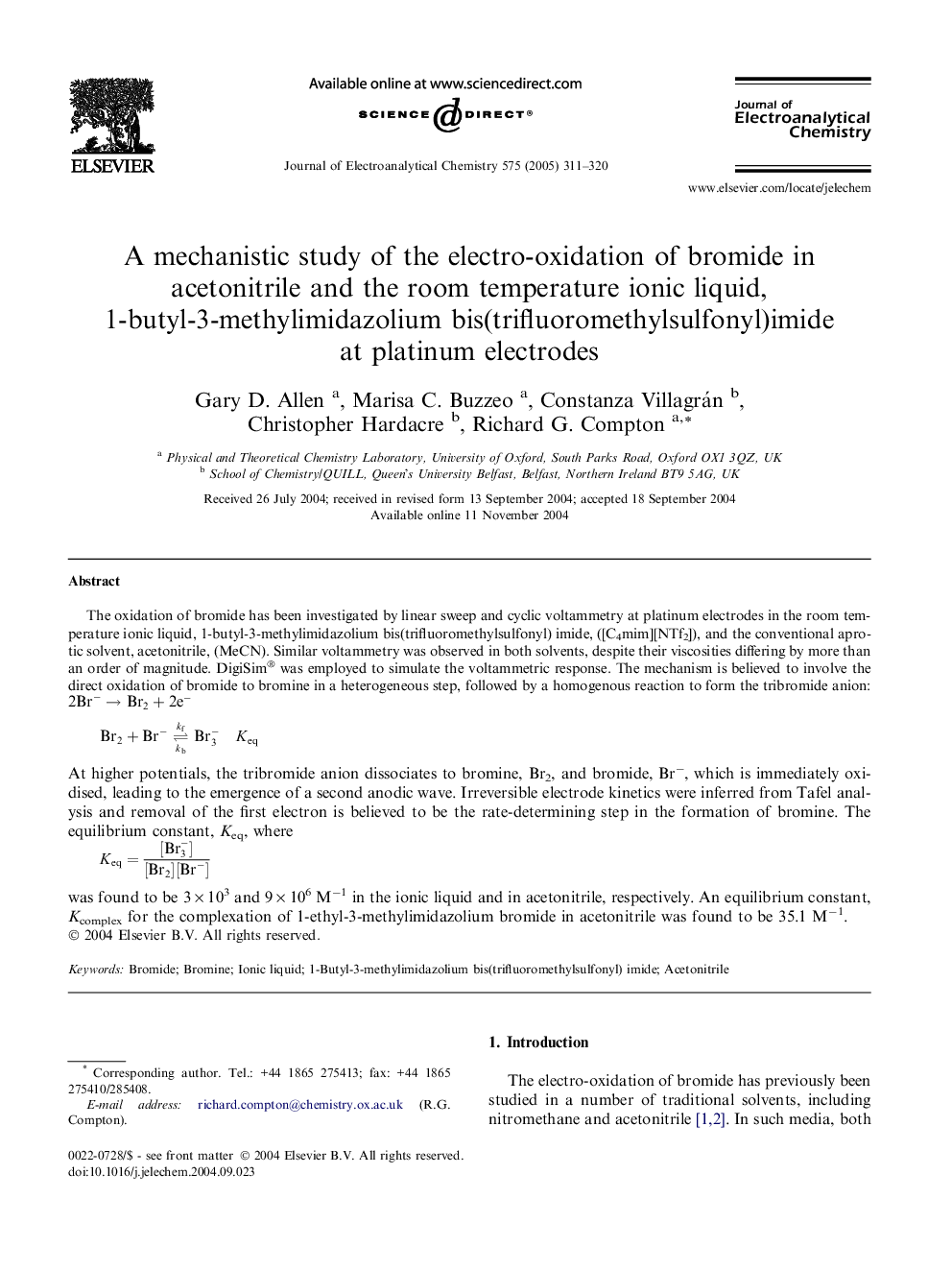| Article ID | Journal | Published Year | Pages | File Type |
|---|---|---|---|---|
| 10275997 | Journal of Electroanalytical Chemistry | 2005 | 10 Pages |
Abstract
The oxidation of bromide has been investigated by linear sweep and cyclic voltammetry at platinum electrodes in the room temperature ionic liquid, 1-butyl-3-methylimidazolium bis(trifluoromethylsulfonyl) imide, ([C4mim][NTf2]), and the conventional aprotic solvent, acetonitrile, (MeCN). Similar voltammetry was observed in both solvents, despite their viscosities differing by more than an order of magnitude. DigiSim® was employed to simulate the voltammetric response. The mechanism is believed to involve the direct oxidation of bromide to bromine in a heterogeneous step, followed by a homogenous reaction to form the tribromide anion:2Br-âBr2+2e-Br2+Br-âkbkfBr3-KeqAthigher potentials, the tribromide anion dissociates to bromine, Br2, and bromide, Brâ, which is immediately oxidised, leading to the emergence of a second anodic wave. Irreversible electrode kinetics were inferred from Tafel analysis and removal of the first electron is believed to be the rate-determining step in the formation of bromine. The equilibrium constant, Keq, whereKeq=[Br3-][Br2][Br-]was found to be 3Â ÃÂ 103 and 9Â ÃÂ 106 Mâ1 in the ionic liquid and in acetonitrile, respectively. An equilibrium constant, Kcomplex for the complexation of 1-ethyl-3-methylimidazolium bromide in acetonitrile was found to be 35.1 Mâ1.
Related Topics
Physical Sciences and Engineering
Chemical Engineering
Chemical Engineering (General)
Authors
Gary D. Allen, Marisa C. Buzzeo, Constanza Villagrán, Christopher Hardacre, Richard G. Compton,
